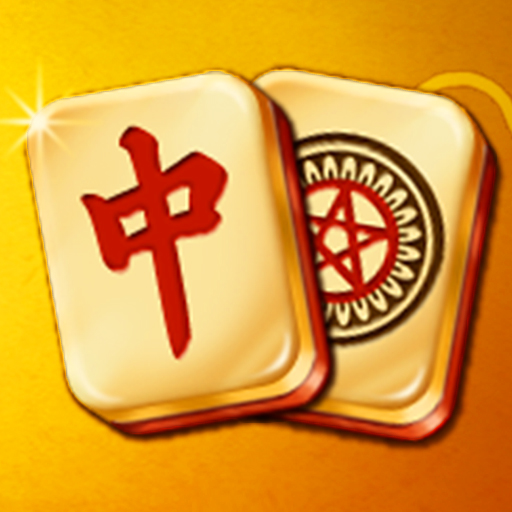
The name “Mahjong Solitaire” is a bit misleading. MahJong is a complicated tile game that comes to us from China, and is a popular and challenging game in its own right. It has nothing to do with Solitaire. Similarly, “MahJong Solitaire” is not a traditional Solitaire game. Really, what you do when you play MahJong Solitaire is match tiles to clear the board. So MahJong Solitaire is a tile matching game, not a conventional form of Solitaire or Mah Jong. Got it? Good. Let’s move on.
The “tiles” used to play MahJong Solitaire are borrowed from the four-player game popular in East Asia known as Mah jong. The 144 tiles of the game are arranged in a specific layered pattern, face up so they can be seen.
A tile is said to be “open” or “exposed” when that tile can be moved either to the left or right without disturbing other tiles — this means the sides of the tile have to be clear for it to be considered “exposed”.
The goal of the game of MahJong Solitaire is to make matched pairs of identical MahJong tiles and take them off the board, hoping to clear the board of all tiles entirely before you get the game all stuck.
It is important to figure out how you’ll expose the tiles under the top layer — this is really the only applicable strategy for gameplay. The game is “over” when all pairs of tiles have been matched and from the board or when there are no exposed pairs left on the board. Although some variations of the game exist, such as variations that allow you to shuffle the order of tiles in order to get to an easy victory, true MahJong Solitaire fans will play the traditional way and lose quite often.
This game goes by many different names, including exotic titles like Shanghai, Taipei, Kyodai and Moraff.
Setups exist for “live” versions of MahJong Solitaire — these setups include special tiles and frames for setting up the tiles in their various positions. Most often, you’ll find Mahjong Solitaire as a computer game — several versions of the WIndows operating system came with some form of MahJong Solitaire.
Many computer versions of MahJong Solitaire allow you to change the look of the tiles and even the patterns on the tiles, though traditional tile sets show things like flowers, animals, jewels, wind directions, dragons, etc. You can also usually play a longer game made up of a series of different tile setups that increase in difficulty. Still other variations throw in “wild” tiles that act like Jokers and match with any other tile.
MahJong solitaire is a weird form of Solitaire, not just because it doesn’t use cards or foundations or tableau, but because it can be played with a partner. Not exactly “solitaire” when you play with someone else, is it?
Points are earned by the player for each pair of tiles cleared from the board, and sometimes bonus points stack up for moving certain sets of matched pairs in a specific order or for clearing pairs of tiles in groups of two or more at once.
A bit of strategy I’ve picked up from playing MahJong Solitaire over and over is that you shouldn’t just match tiles willy-nilly — think through your match, and try to open up new tiles underneath each match you clear, ideally revealing tiles that match something currently in your way.
More Solitaire Articles: